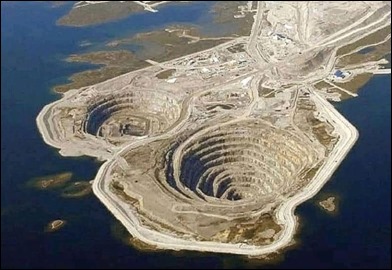What is the mining environmental impact of going green?
Posted By RichC on March 19, 2022
Sometimes people are too politically invested in climate change and environmental policies that they “can’t see the forest through the trees,” as John Heywood’s 1546 proverb propends (an idiom).  This is not to say we can’t improve … or that we should be resist/thwart the shift towards renewables and improve our environmental footprint, BUT we ALL need to have our eyes open and tread responsibility as we move forward. We must wisely use our existing resources too while maintaining a strong economy and fiscal footing … not to mention remain a world superpower that is big enough to deter existing or want-to-be adversaries … like the latest personification of evil.
This is not to say we can’t improve … or that we should be resist/thwart the shift towards renewables and improve our environmental footprint, BUT we ALL need to have our eyes open and tread responsibility as we move forward. We must wisely use our existing resources too while maintaining a strong economy and fiscal footing … not to mention remain a world superpower that is big enough to deter existing or want-to-be adversaries … like the latest personification of evil.
 With that prefaced, here is a short article posted to LinkedIn by Brett Alexander, a geologist with a business background.
With that prefaced, here is a short article posted to LinkedIn by Brett Alexander, a geologist with a business background.
Batteries, they do not make electricity – they store electricity produced elsewhere, primarily by coal, uranium, natural gas-powered plants, or diesel-fueled generators. So, to say an EV is a zero-emission vehicle is not at all valid.
Also, since forty percent of the electricity generated in the U.S. is from coal-fired plants, it follows that forty percent of the EVs on the road are coal-powered, do you see?”
But that is not half of it. For those of you excited about electric cars and a green revolution, I want you to take a closer look at batteries and also windmills and solar panels. A typical EV battery weighs one thousand pounds, about the size of a travel trunk. It contains twenty-five pounds of lithium, sixty pounds of nickel, 44 pounds of manganese, 30 pounds cobalt, 200 pounds of copper, and 400 pounds of aluminum, steel, and plastic. Inside are over 6,000 individual lithium-ion cells.
To manufacture each EV auto battery, you must process 25,000 pounds of brine for the lithium, 30,000 pounds of ore for the cobalt, 5,000 pounds of ore for the nickel, and 25,000 pounds of ore for copper. All told, you dig up 500,000 pounds of the earth’s crust for one battery.”
The main problem with solar arrays is the chemicals needed to process silicate into the silicon used in the panels. To make pure enough silicon requires processing it with hydrochloric acid, sulfuric acid, nitric acid, hydrogen fluoride, trichloroethane, and acetone. In addition, they also need gallium, arsenide, copper-indium-gallium- diselenide, and cadmium-telluride, which also are highly toxic. Silicon dust is a hazard to the workers, and the panels cannot be recycled.
Windmills are the ultimate in embedded costs and environmental destruction. Each weighs 1688 tons (the equivalent of 23 houses) and contains 1300 tons of concrete, 295 tons of steel, 48 tons of iron, 24 tons of fiberglass, and the hard to extract rare earths neodymium, praseodymium, and dysprosium. Each blade weighs 81,000 pounds and will last 15 to 20 years, at which time it must be replaced. We cannot recycle used blades.
There may be a place for these technologies, but you must look beyond the myth of zero emissions.
“Going Green” may sound like the Utopian ideal but when you look at the hidden and embedded costs realistically with an open mind, you can see that Going Green is more destructive to the Earth’s environment than meets the eye, for sure.
I’m not opposed to mining ,electric vehicles, wind or solar. But showing the reality of the situation.

Comments